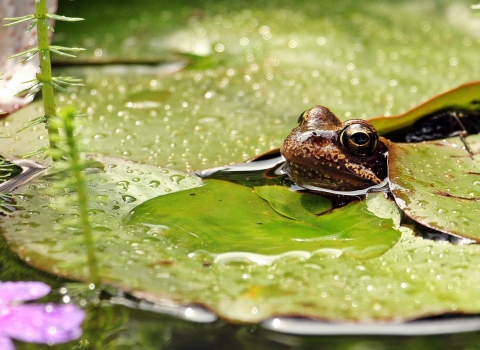Though originally from Co. Durham and partly educated in Yorkshire, I am a naturalised Fenman having lived in and around the region for over 50 years. I became a botanist whilst living in Whittlesey and attending the Neale-Wade school - it was there that the germ of the Fenland Flora was born. Following university at Cambridge (taught by luminaries of the Trust such as Max Walters), I worked briefly with the Field Studies Council as a tutor in Epping Forest. Although I was by then committed to a research career at Monks Wood, my experience with the FSC, teaching groups from 7 year-olds to adults, very nearly changed the course of my working life. It certainly convinced me that I wanted to combine research with teaching and training.
Joining the staff at Monks Wood in 1976, my research at first focussed on transport routes, particularly looking at the role that the banks of active railway lines played in protecting biodiversity. A national survey of railway land was combined with studies of the management of the verges of railways, roads and motorways. Soon, however, I began to look at other straight lines in the countryside – drainage ditches within grazing marshes and other floodplains. For a while, I examined the deterioration of such lowland wetlands over the 19th and 20th centuries before developing the research into methods of restoring biodiversity and creating new wetland and grassland habitats. The latter part of my career at Monks Wood and CEH Wallingford further applied ecohydrology to agri-environment schemes, testing how such programmes could combine farming and nature conservation.
In parallel to my working life, I continued teaching in my “spare time” through the WEA, Cambridge Botanic Garden, the CU Institute of Continuing Education and increasingly with the Wildlife Trust. As a research ecologist, one is continually reminded that the work is not complete until it is published. In a similar way, I felt that remaining just within the research reservation was not enough – I enjoyed trying to pass on some of what I had learnt to people who might apply it, not only nature reserve wardens but anyone committed to knowing more about nature and its protection. That motive extended to taking groups abroad to share wildlife, wild places and their survival. One of the 30 countries where I guided British naturalists was Romania, where I later led the team implementing Natura 2000, where I met my wife and where, since retirement, I now live half the time.
The role of a trainer for the Wildlife Trust is sheer fun for me and I hope for the people in groups that I lead. I am engaged now in writing a Flora of the entire Fenland basin, and I spend a lot of time trying to persuade sceptical folk of the value of nature conservation in such an intensively altered landscape. With Wildlife Trust courses, the participants are different – they too are committed to learning about and valuing nature, making the courses more of a conversation than one-way traffic. In the present environmental emergency, it is important that there are as many knowledgeable advocates for nature as possible. In a small way, these courses provide both trainer and group to share their enthusiasm and increase their understanding.


